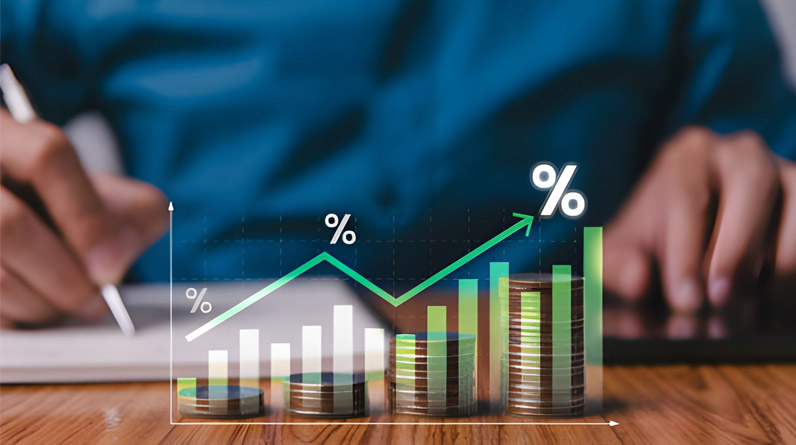Imagine having a financial partner who works for you 24/7, never takes a vacation, and becomes more productive with each passing year. This partner doesn’t require a salary, doesn’t complain, and multiplies your money while you sleep. Sound too good to be true? It’s not—it’s compound interest, and it’s available to anyone willing to start today.
While most people understand that saving money is important, few truly grasp the exponential power hiding within their savings accounts. The difference between someone who retires comfortably and someone who struggles financially often comes down to one factor: when they started letting compound interest work for them.
Understanding Compound Interest: Your Money’s Multiplication Engine
Compound interest isn’t just about earning interest on your initial deposit—it’s about earning interest on your interest. This creates a snowball effect that accelerates over time, turning modest contributions into substantial wealth.
The Fundamental Difference That Changes Everything
To understand why compound interest is so powerful, let’s compare it to simple interest:
| Factor | Simple Interest | Compound Interest |
|---|---|---|
| What it calculates on | Principal only | Principal + accumulated interest |
| Growth pattern | Linear (steady) | Exponential (accelerating) |
| $1,000 at 5% for 10 years | $1,500 total | $1,629 total |
| $1,000 at 5% for 30 years | $2,500 total | $4,322 total |
Notice the dramatic difference over 30 years? That extra $1,822 represents the true power of compounding—money you earned without contributing a single additional dollar.
The Three Phases of Compound Interest Growth
Understanding how compound interest behaves over time helps explain why starting early matters so much. Financial experts often reference the 8-4-3 rule, which breaks wealth accumulation into three distinct phases:
Phase 1: The Foundation Years (Years 1-8)
This phase feels slow. Your balance grows steadily, but the returns seem modest. Many people get discouraged here and stop contributing. This is precisely when you need to stay consistent—you’re building the foundation for explosive growth later.
What’s happening: Your principal is accumulating, and small interest payments are beginning to stack. Every dollar you add now becomes significantly more valuable than dollars added later.
Phase 2: The Acceleration Years (Years 9-12)
This is where the magic becomes visible. The interest earned in Phase 1 starts generating its own returns. Your account balance may double during this period, even if you’re making the same monthly contributions.
What’s happening: The snowball is rolling faster. Returns from your initial investments are now substantial enough to generate meaningful interest on their own.
Phase 3: The Exponential Years (Years 13+)
This phase is why financial advisors emphasize long-term thinking. The growth becomes dramatic. Your investment could add as much value in a single year as you contributed in the first several years combined.
What’s happening: You’ve reached the point where your money is truly working harder than you are. The compound effect has reached critical mass.
The Real Cost of Waiting: A Perspective That Changes Minds
Let’s examine what delaying your start truly costs you, using real numbers that demonstrate the urgency of beginning now.
The Ten-Year Penalty
Consider three siblings who all decide to save for retirement:
- Emma starts at age 25, contributes $300 monthly until age 65
- Michael starts at age 35, contributes $300 monthly until age 65
- Sarah starts at age 45, contributes $300 monthly until age 65
All three earn an 8% average annual return. Here’s what happens:
| Person | Starting Age | Total Contributed | Final Balance at 65 | Interest Earned |
|---|---|---|---|---|
| Emma | 25 | $144,000 | $1,049,000 | $905,000 |
| Michael | 35 | $108,000 | $447,000 | $339,000 |
| Sarah | 45 | $72,000 | $178,000 | $106,000 |
Emma contributed only $36,000 more than Michael but ended up with $602,000 more in retirement savings. Sarah, despite contributing faithfully for 20 years, accumulated less than one-sixth of Emma’s total.
This isn’t about intelligence or income—it’s purely about time. Emma gave compound interest an extra decade to work its magic, and that decade was worth more than half a million dollars.
The Rule of 72: Your Quick Doubling Calculator
Want to know how long it takes your money to double? Use the Rule of 72: simply divide 72 by your annual interest rate.
Examples:
- At 6% annual return: 72 ÷ 6 = 12 years to double
- At 8% annual return: 72 ÷ 8 = 9 years to double
- At 10% annual return: 72 ÷ 10 = 7.2 years to double
This simple formula reveals something crucial: higher returns dramatically accelerate wealth building. The difference between a 6% and 10% return isn’t just 4 percentage points—it’s nearly 5 years of doubling time, which compounds into hundreds of thousands of dollars over a lifetime.
Five Common Mistakes That Sabotage Compound Interest

1. Waiting for the “Perfect Time” to Start
Many people delay investing because they’re waiting to earn more money, pay off debt, or understand investing better. The truth? There’s never a perfect time. Starting with $50 per month today beats starting with $500 per month five years from now.
2. Withdrawing Money During Market Downturns
When markets drop, compound interest hasn’t stopped working—it’s giving you the opportunity to buy investments at lower prices. Withdrawing during downturns locks in losses and disrupts the compounding process.
3. Neglecting Tax-Advantaged Accounts
Traditional IRAs, Roth IRAs, and 401(k) accounts offer tax benefits that supercharge compound interest. A 401(k) with employer matching is particularly powerful—it’s an instant 50-100% return on your contribution before compound interest even begins.
4. Ignoring Compound Frequency
Interest that compounds monthly grows faster than interest that compounds annually. While the difference seems small initially, over decades it adds up to thousands of dollars. Always ask about compounding frequency when choosing financial products.
5. Failing to Reinvest Dividends and Interest
When your investments pay dividends or interest, automatically reinvesting them keeps your money working for you. Spending these payments means giving up future compound growth on those funds.
Practical Steps to Harness Compound Interest Today
For Beginners (Starting with Limited Funds)
- Open a high-yield savings account – Start with whatever you can afford, even $25
- Set up automatic transfers – Make saving effortless by automating monthly deposits
- Take advantage of employer retirement plans – Contribute at least enough to capture any employer match
- Start with index funds – Low-cost, diversified funds that track market averages provide reliable long-term growth
For Intermediate Savers (Building Momentum)
- Maximize tax-advantaged accounts – Contribute the maximum allowed to IRAs and 401(k)s
- Implement the “raise strategy” – When you get a raise, increase your savings rate by half the raise amount
- Diversify across account types – Balance traditional and Roth accounts for tax efficiency
- Review and rebalance annually – Ensure your portfolio stays aligned with your goals
For Advanced Investors (Optimizing Returns)
- Consider dividend growth investing – Companies that consistently increase dividends compound your wealth faster
- Explore DRIP programs – Dividend Reinvestment Plans eliminate fees and maximize compounding
- Balance growth and income – Adjust your portfolio based on your timeline and risk tolerance
- Use dollar-cost averaging – Regular investments smooth out market volatility and remove emotion from investing
The Psychology of Patience: Why Most People Give Up Too Soon
Compound interest rewards patience, but our brains are wired for instant gratification. During the foundation years, progress feels painfully slow. You might contribute $5,000 in a year and see only $5,400 in your account—a seemingly modest $400 gain.
This is where understanding the phases of compound interest becomes psychological armor. That “slow” $400 isn’t just interest—it’s the seed of future wealth. In 20 years, if you never contributed another dollar, that $5,400 could become $25,000 at an 8% return.
Remember: Compound interest is a marathon, not a sprint. The winners are those who start early, contribute consistently, and resist the temptation to give up during the seemingly slow early years.
Real-Life Application: The $5 Daily Coffee Strategy
Let’s address the famous “skip the daily coffee” advice with actual numbers. If you’re 25 years old and redirect just $5 per day ($150 per month) from expenses into investments earning 8% annually, by age 65 you’d have approximately:
- Total contributed: $72,000
- Final balance: $524,000
- Interest earned: $452,000
That daily coffee money becomes a half-million-dollar retirement fund. This isn’t about deprivation—it’s about conscious choices and understanding opportunity costs.
Conclusion: Your Financial Future Starts With One Decision
Compound interest doesn’t require genius-level intelligence, a high-paying job, or perfect market timing. It requires three things: starting now, contributing consistently, and staying patient.
The most valuable day to start investing was yesterday. The second most valuable day is today. Every day you delay is a day that compound interest could have been working in your favor.
Whether you’re 22 or 52, the principles remain the same. Small, consistent savings transformed by compound interest create wealth that seems almost magical when you look back years later. The only question is: will you be one of the people who harnesses this power, or one of the people who wishes they had started sooner?
The choice is yours. The time is now. Your future self will thank you.


